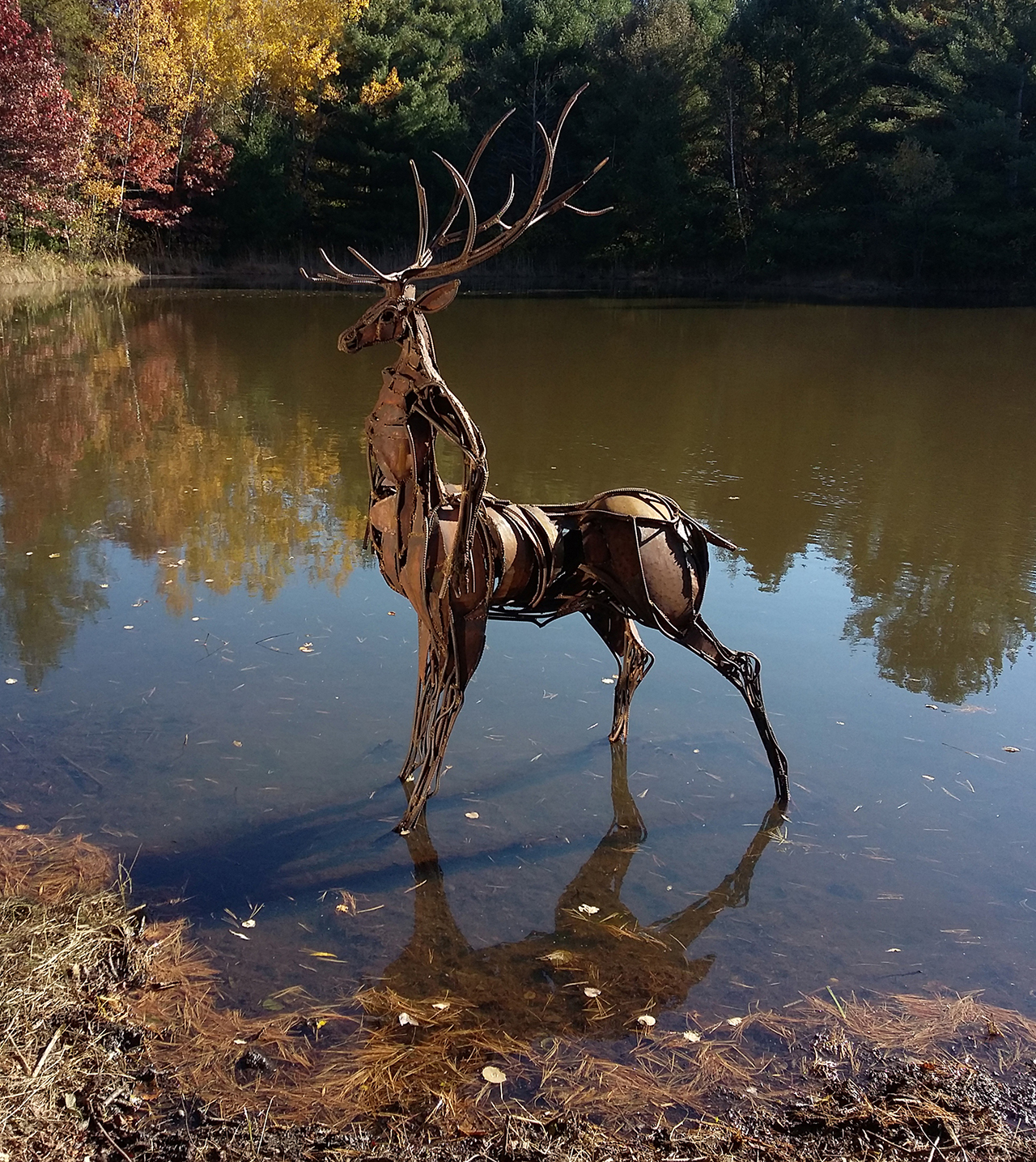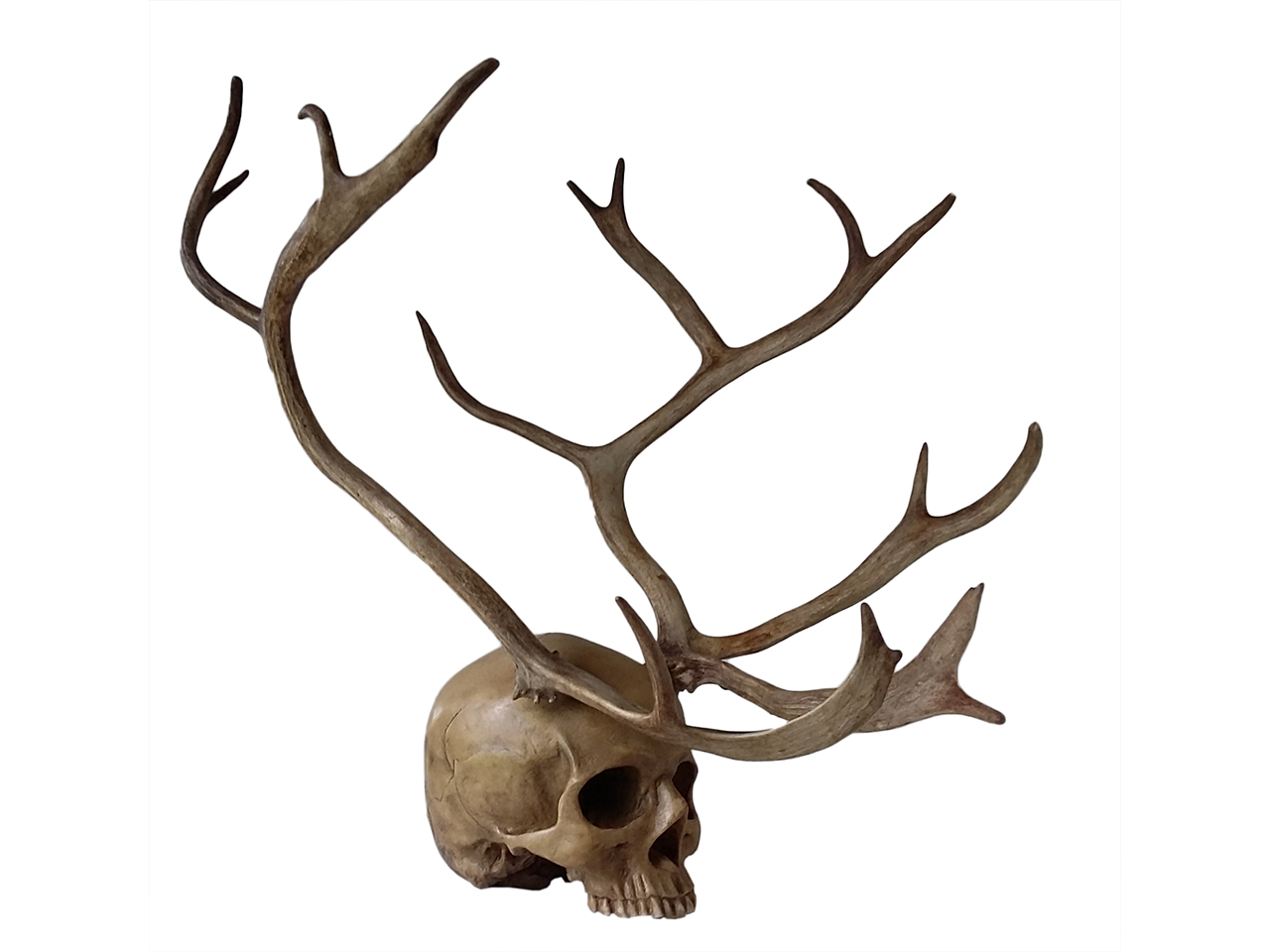Therianthropes
In her essay « Portrait de l’homme en animal », », Amélie Bonnet Balazut makes the observation that in prehistoric art, « representations of humans undergo a genuine metamorphosis ».For many of them are only half human and have animal as well as human traits.These half-man half-animal hybrids, called therianthropes by prehistorians, even make up the majority of human representations known in prehistoric parietal art ». « They are, beyond all likelihood, what man is and yet is not, an animal as well as a man, and a man as well as an animal. Not only are human representations scarce, but they are also denied the attention and representational craft reserved to animal figures, and are most often deprived of their true human nature so as to compose with that of the animal.If a feeling of exaltation is to be found, it is not that of human action - the latter being nonexistent - but rather that of animal vitality, as if animality embodied much more than the reality we associate with it today.So that eventually, the main focus is on animality in man, or « animal humanity ». It is a duplicity which, for Georges Bataille, is defined as the paradox of man being attributed the prestige of the animal : With some sort of unexpected luck, these Lascaux men made us aware that as men they resembled us, but they did so by leaving us an image of animality that they were leaving behind . It is as if they had had to adorn a burgeoning prestige with an animalistic grace that they had lost. »
Therianthropy is common to many cultures throughout geography and history : shamanism, ancient mythologies, medieval bestiaries, lycanthropy, etc.

Deer antlers - H : 37 cm - October 2020

Hornbeam branches and various lichens on wood structure - H : 1,46 m - October 2020

Wood, grass, reindeer antlers - H : 109 cm × W : 67 cm × D : 57 cm - Iceland - April 2019

Reindeer antlers, oak, beech, cement, vegetal fibers and resins, various organic materials - H : 2,40 m - October 2018

Elk centaurSteel - Stevens Point Sculpture Park (Wisconsin / USA) - Height : 285 cm / Width : 80 cm / Length : 170 cm - 2017 october
Partenariats :
Stevens Point Sculpture Park
University of Wisconsin, Stevens Point, Department of Art and Design
Community Foundation of Central Wisconsin
Parks, Recreation & Forestry department / Stevens Point
Historically common in North America, the original elk (Cervus elaphus canadensis, a sub specie of Red deer) has disappeared because of over hunting and a rapid decline in habitat in Wisconsin and other areas. After a failed attempt of reintroduction of elk in the 1930’s, the animal is finally slowly returning (Rocky Mountains elk, Cervus elaphus nelsoni). University of Wisconsin - Stevens Point has been involved in this reintroduction plan. Herds of elk now begin to grow again.
In many Indian cultures, elk was a symbol of strength and courage. Teeth, hide and skin were used in production of clothes, blankets and robes.
This sculpture, an hybrid of human and elk, tries to take a place in this long story of relationships between two species.

Cervus sapiensDeer skull, wood (oak and beech), resins, wood filler, organic glues, pigments - Height : 56 cm - April 2016

Homo tarandusReindeer antlers, human skull vegetal resin replica, organic glues, pigments - Height : 45 cm - April 2016